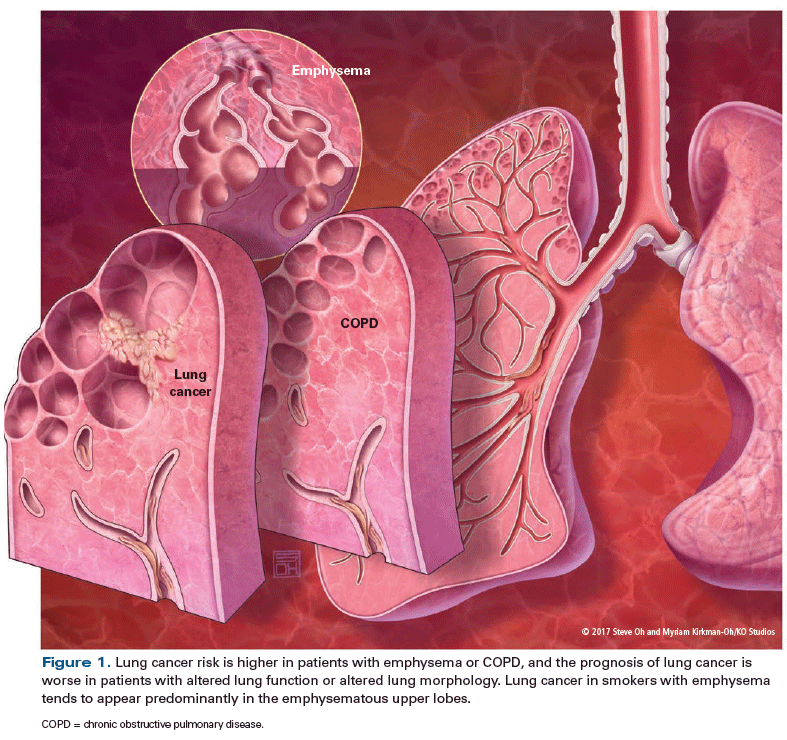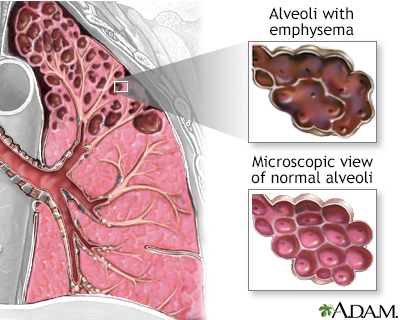Emphysema can be defined as having a loss of lung elasticity permanent enlargement of the air spaces distal to the terminal bronchioles and destruction of the alveolar walls.
Hanging ends of alveolar walls emphysema.
Emphysema is a condition that involves damage to the walls of the air sacs alveoli of the lung.
Signs and symptoms include minimal coughing and barreled chest.
Bronchitis is an inflammation and swelling of the bronchial walls.
Consequences of alveolar destruction.
Inhaled air becomes trapped harder to exhale.
They often occur together.
In 1984 the division of lung disease at the nhlbi funded a workshop which led to what is still the most recent official definition of emphysema i e a condition of the lung characterized by abnormal permanent enlargement of airspaces distal to the terminal bronchiole accompanied by the destruction of their walls and without obvious fibrosis 1.
It typically affects the upper lobes first and most profoundly.
Emphysema also called pulmonary emphysema condition characterized by widespread destruction of the gas exchanging tissues of the lungs resulting in abnormally large air spaces lungs affected by emphysema show loss of alveolar walls and destruction of alveolar capillaries as a result the surface available for the exchange of oxygen and carbon dioxide between inhaled air and blood traversing.
Loss of surface area for gas exchange.
12 distal airspace enlargement with alveolar destruction reduces maximal expiratory airflow by decreasing the lung elastic recoil.
It can be classified under the umbrella term chronic obstructive pulmonary disorder copd 1.
Emphysema destruction of alveolar alveolar capillary walls narrowed and tortuous small airways leads to large permanently inflated alveolar spaces.
Pneumothorax occurs when pleural membrane surrounding large.
Later stages of emphysema adjacent damaged alveoli forming even larger air spaces.
Emphysema and chronic bronchitis are the two most common forms of chronic obstructive pulmonary disease copd.
There are three types of emphysema.
A person with chronic bronchitis typically has a daily cough with phlegm that lasts for months at a time over several years.
Emphysema is defined as enlargement of the airspaces distal to the terminal bronchioles due to destruction of the alveolar walls fig.
Type 1 squamous alveolar epithelial cells.
It is one end of the spectrum of copd resulting from the smoking of tobacco.
Constituting 95 of the alveolar surface area 8 the type 1 cells are extremely thin and flexible to help in the process of gas diffusion so the oxygen carbon dioxide exchange can occur between the alveoli and the.
The one cell thick walls of the alveoli are composed of two distal airway epithelium cell types pneumocytes 7.










